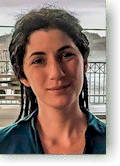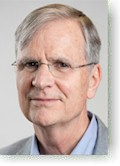|
|
|||||||||
|
|
|||||||||
From Our Archives
|
|||||||||
|
Author:
Roger Bernier, PhD, MPH
Developments in the current COVID-19 pandemic are happening rapidly as case counts are doubling every several days and policy interventions are being modified to keep pace with new information about how this virus behaves or is likely to behave. Modelling A modelling study which reportedly had significant influence on decision making about social distancing measures in Great Britain and the United States was released on March 16 by a COVID-19 Response Team at the Imperial College in London. Entitled “Impact of non-pharmaceutical interventions (NPIs) to reduce COVID-19 mortality and healthcare demand”, the paper characterizes the public health threat as “the most serious seen in a respiratory virus since the 1918 H1N1 influenza pandemic.” It was authored by Neil Ferguson and 29 co-authors from the various centers and institutes at the Imperial College. Unmitigated Pandemic Impact Without putting into place effective control measures, the pandemic is predicted to cause 2.2 million deaths in the US, peaking this coming summer, and about a quarter of that number (510,000 deaths) in Great Britain, peaking a bit earlier. Of special concern is that this number of cases creates a demand for critical care beds that exceeds 30 times the current maximum bed capacity in both countries. Mitigation Vs Suppression With control measures possible, the report makes a distinction between mitigation and suppression strategies. Mitigation seeks to slow but not stop virus spread in an effort to buy time for the healthcare system to care for patients. Suppression seeks to reverse the increasing number of cases and to keep case numbers low. Perhaps the most significant finding in the report, according to the authors, is that mitigation strategies still result in a need for hospital beds that is 8 times greater than the existing surge capacity. More alarming, mitigation alone still allows for 250,000 deaths in the UK and 1.1-1.2 million in the US. “We therefore conclude that epidemic suppression is the only viable strategy at the current time,” says the report, for countries that can achieve it. Can it be done? The feasibility of such an all-out suppression strategy is very much in question, not only because of its inherent challenges but because it must be implemented for a long period of time until a vaccine becomes available. Otherwise, removing the austere measures would be likely to produce a rebound in transmission. But even if it succeeds, suppression may not completely protect the most vulnerable and deaths could still be high, according to the report. The authors admit making their recommendation without consideration of ethical, indirect adverse health, and economic consequences that might be entailed by a suppression strategy. Saving lives from coronavirus death is prioritized above all else. Proposed Interventions Since the feasibility of effectively implementing suppression strategies remains an open question, it is important to consider what interventions are involved in a suppression strategy. According to Ferguson and colleagues, suppression requires 1) long term sustained social distancing of the entire population,2) home isolation of cases and household quarantine of their family members, and possibly 3) school and university closures. Under their model, long term sustained social distancing means that all households reduce contact outside the household, school, or workplace by 75%. In this scenario, household contact rates are assumed to increase by 25%. Conclusion The authors conclude that it will be necessary for jurisdictions to layer multiple interventions and that “The choice of interventions ultimately depends on the relative feasibility of their implementation and their likely effectiveness in different social contexts.” Somber Note The report ends on a somber note: “…it is not at all certain that suppression will succeed long term; no public health intervention with such disruptive effects on society has been previously attempted for such a long duration of time. How populations and societies will respond remains unclear.” ■ Epidemiologists In The News The Public Now Knows What Epidemiologists Do The COVID-19 pandemic has brought unprecedented attention to epidemiologists and their work. All of a sudden the world knows who epidemiologists are and what they do. Whether on television, newspapers, or social media, epidemiologists are being interviewed constantly to get their opinions about various characteristics of the SARS CoV-2 virus causing the pandemic and potential control measures. Old acquaintances that have fallen out of touch are reconnecting with their epidemiologist friends or former neighbors to “get their take” on the pandemic. One benefit of all this attention--No more guesses about epidemiologists being skin doctors. The Epidemiology Monitor has collected a sample of these news items involving epidemiologists to give readers a sample of the more visible public role being played by epidemiologists everywhere.
■ |
|||||||||
|
|
|||||||||






